Flexible living spaces, chance encounters, unique layouts – in their book “UNIT”, authors Finbarr Fallon and Samantha Chia reveal glimpses into the insides of Singapore’s high-rise private apartments built in the 70s and 80s to uncover some timeless qualities.
2-minute-read
Architectural photographer Finbarr Fallon and urban planner Samantha Chia self-published an unusual book in 2022, entitled “Unit. a glimpse into Singapore’s 1970s – ‘80s Private Apartments”. Each of their two print-runs sold out very quickly. Besides fueling our curiosity to peek into people’s homes, the book also sheds light on an interesting period in Singapore’s architecture history.
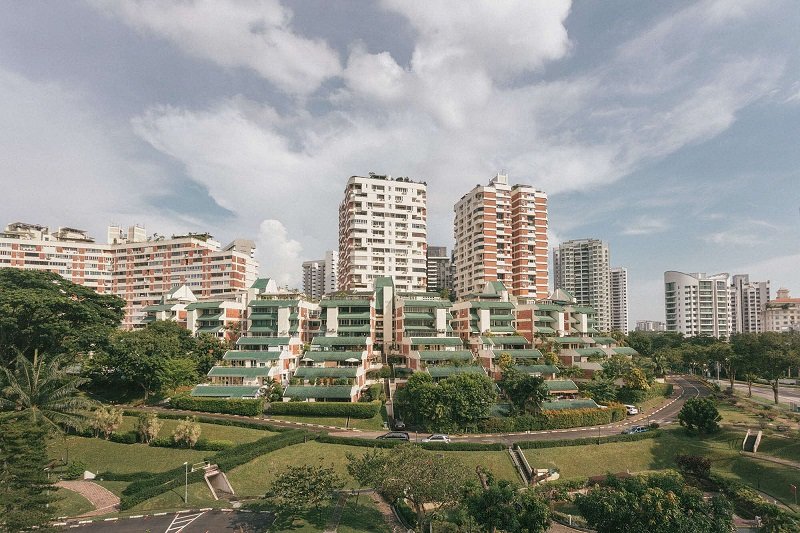
Pandan Valley condominium. Image: Finbarr Fallon and Samantha Chia.
The beautiful photographs and in-depth interviews with residents of one unit in each of the 10 developments, built in the 70s and 80s, offer a personal and intimate look into the time when high-rise living in private apartments were first introduced. The book also explores the influence of architects’ creative designs on our living spaces.
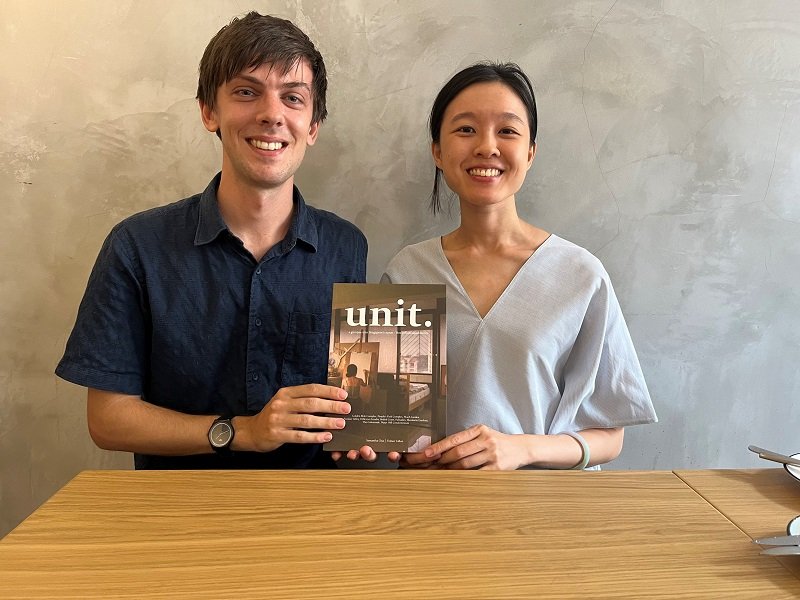
Finbarr Fallon and Samantha Chia with their “UNIT” book.
Why did you decide to publish such a book in 2022 and what was the process of finding residents to interview?
Samantha: When we were thinking about making this book, many of us were working from home in 2020 because of the COVID-19 pandemic. That experience made us think about what it means to live at home. We’ve also always been fascinated by the condominiums built in the 70s and 80s in post-independence Singapore. It was an innovative period where architects grappled with what high-rise living in private apartments should look like.
Beyond appreciating our architecture from the outside, the book offers us a chance to look at our architecture from the inside, to understand how our architects’ designs then have shaped the way we live.
Finbarr: The book was an interesting break from doing architectural photography work. It wasn’t about capturing carefully styled homes but telling stories about our homes in more authentic ways.
We didn’t know anyone who live in these apartments. Over two years, we found and interviewed residents from 10 units across 10 projects through the organic way, asking friends and posting our interest to find residents on Instagram. Our first interview was with a couple who lived at the People’s Park Complex, and they are also featured on the cover of the book.
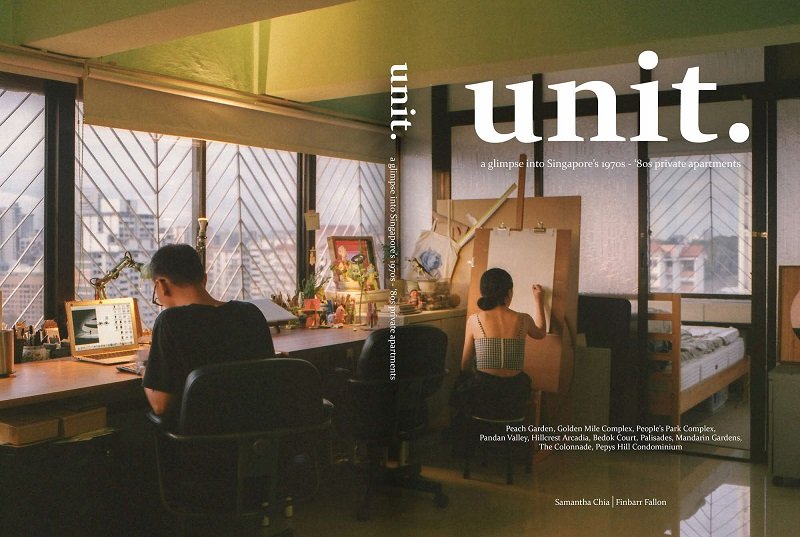
Cover of “UNIT” book showing the couple living at People’s Park Complex. Image: Finbarr Fallon and Samantha Chia.
What are design features in these projects that stand out to you?
Samantha: One thing that has stood out to us is how each project has unique and different layouts that are contextual and specific to their respective sites. Some also have apartment units that have varying configurations. For example, the family that we interviewed at Palisades had viewed many apartments before deciding on a unit in this development because of its unique layout.
For Pandan Valley, there are many different apartment types, from the single-storey units with generous spaces, to those that have split levels. This could be partly a result of architects imagining these private apartments as houses in the air, making the case for high-rise apartment living then. In exploring mixed uses, Pandan Valley also has retail shops and F&B as part of its development to provide greater convenience to its residents.
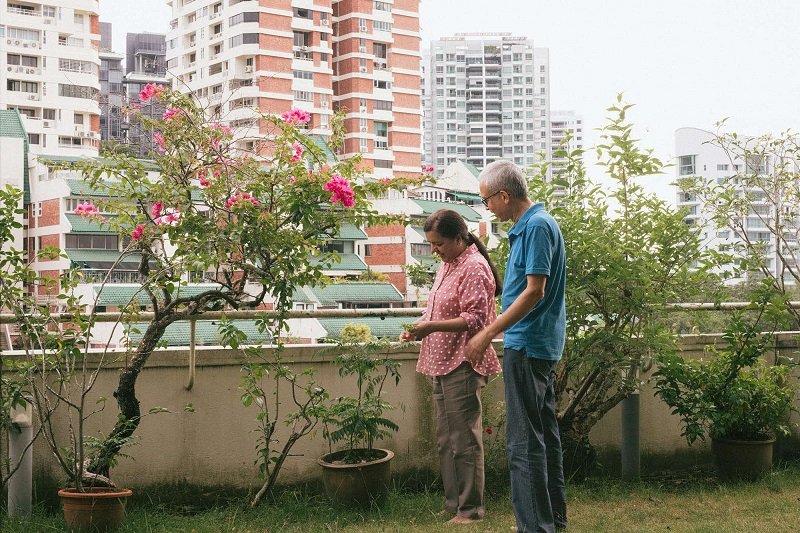
A balcony at the Pandan Valley condominium with space for residents to create their own gardens. Image: Finbarr Fallon and Samantha Chia.
Finbarr: Another interesting design feature is how architects catered for inside-outside spaces to encourage community interaction. For Bedok Court, some of the units have very large forecourts which are part of the private living spaces, but as they are easily visible to neighbours, they seem to be a part of the public realm as well. It appears that these spaces are designed for chance encounters, encouraging neighbours to stop for a chat or to keep a lookout for each other.
Why did the residents choose to live in these apartments?
Samantha: One reason is the memories associated with living in the place for a very long time. Many of the apartments are also designed to capture and offer access to good views of the surroundings. The resident who has lived in Peach Garden for about 40 years has seen East Coast evolve and change over time, right from his balcony.
Another reason is because the apartment’s unique features meet the needs and lifestyle of the resident. For example, the couple living at People’s Park Complex chose the corner unit because it has a lot of natural light, which is good for one of them who works as an artist.
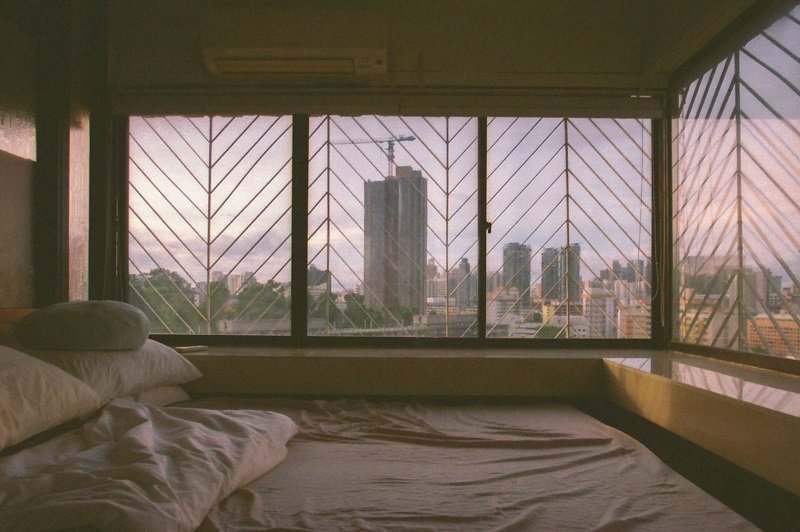
The bedroom of the People’s Park Complex. Image: Finbarr Fallon and Samantha Chia.
Any surprising detail in these projects that you’ve discovered?
Finbarr: It is the one-of-a-kind funicular lift in the Palisades, which is built on the side of Pasir Panjang hill. I first learnt about this development from the book, ‘Innovative Architecture of Singapore’, which I came across in a hidden corner of Basheer bookstore.
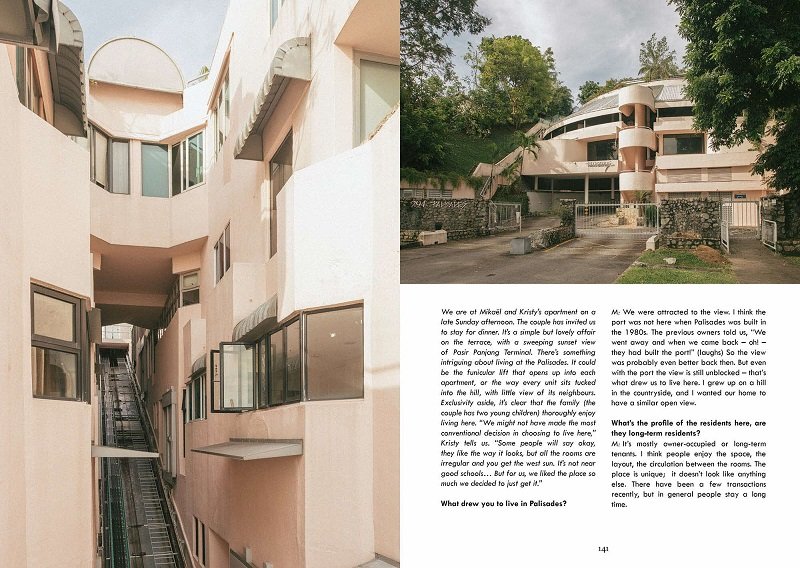
The funicular lift at the Palisades. Image: Finbarr Fallon and Samantha Chia.
When we arrived at Palisades, we realised that the only way to get up is through the lift, or an arduous hillside hike. The winch lift is open to sky and we understand that only one company can service such a lift.
What is one design consideration in these projects that is important to you in shaping our living spaces for the future?
Finbarr: I think it is important for apartment layouts to have the flexibility to be adapted and changed to suit different needs now and in future. Many of the apartment units in these projects are column free. This allows residents to have more personal expression in the design of their living spaces.
Your book also helps to support the Singapore Architecture Collection efforts in telling more compelling stories about Singapore’s architectural journey. What do you hope to see more of?
Finbarr: I hope there will be more outreach opportunities for people to experience Singapore’s architecture firsthand. Nothing beats being physically there to experience a well-designed space. This is something that you cannot bring across through photographs and words alone.
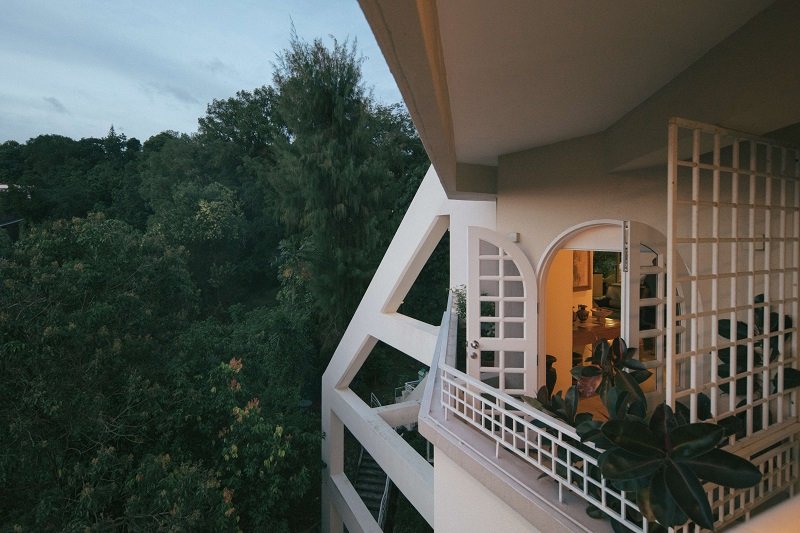
The Pepys balcony at the condominium. Image: Finbarr Fallon and Samantha Chia.
We also need to keep finding relatable angles for people to access and appreciate our local architecture. During the exhibition that we held to share materials from our book, we were surprised by the support and interest of a diverse crowd of people, both young and old.
Samantha: I hope that the Singapore Architecture Collection can help to elevate Singapore’s brand of architecture locally and internationally, inspiring us to continue to recognise our own local talents even more.
About the Singapore Architecture Collection
The Singapore Architecture Collection reflects deeper efforts to document and preserve archival materials about Singapore’s modern and contemporary architecture. These records not only tell the stories behind the design of our landmarks and everyday places, they can also inspire present and future generations in shaping Singapore’s built environment. Architects, planners, urban designers and other members of the built environment industry are invited to contribute their materials to help enhance and enrich the collection.
For more information about the collection, go to https://go.gov.sg/sgarchitecturecollection. For queries or to donate to the collection, write to enquiry@nlb.gov.sg.
Source: https://www.ura.gov.sg/Corporate/Resources/Ideas-and-Trends/Looking-inside


